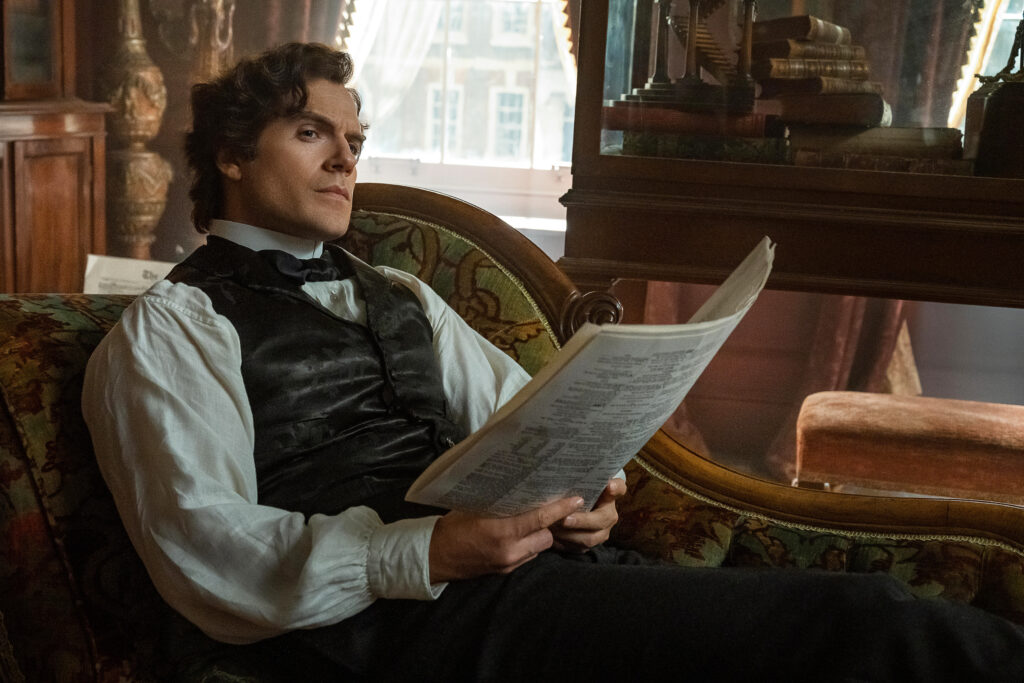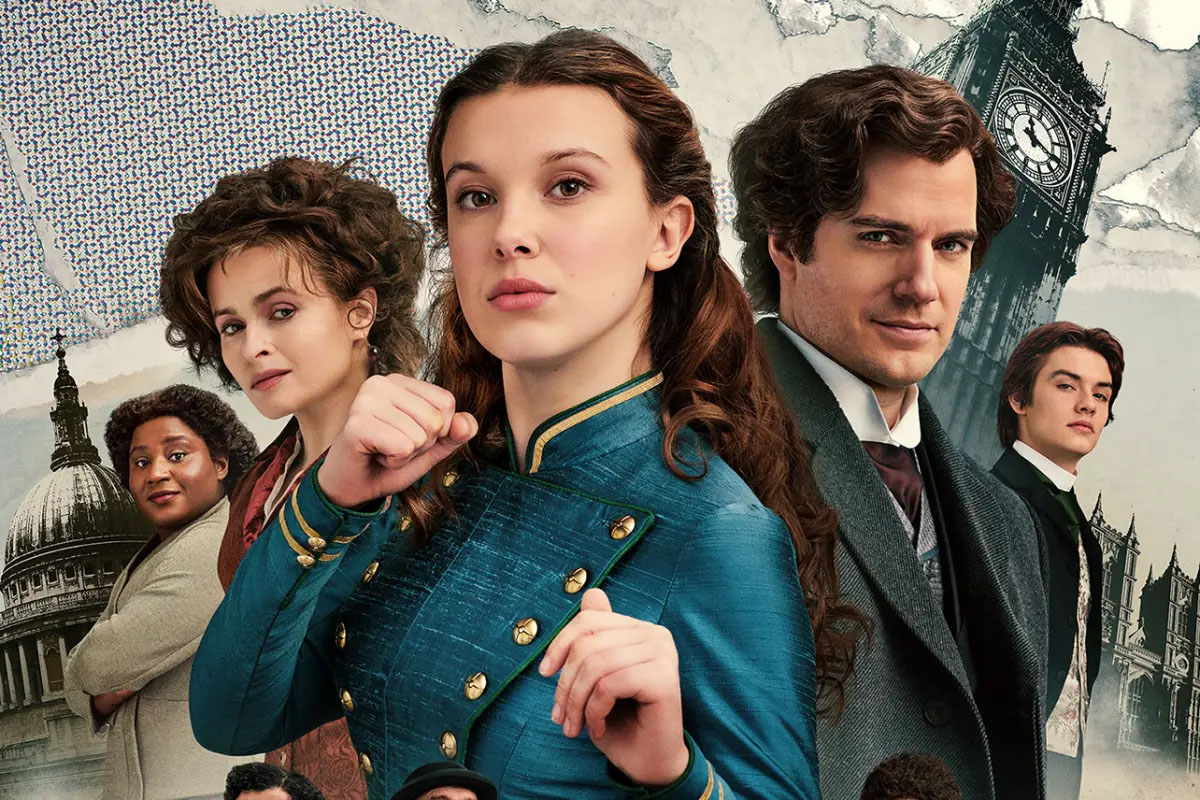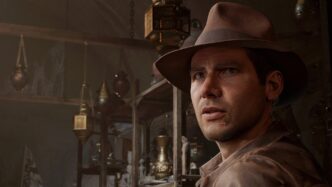If Enola Holmes was a charming twist on Sherlock Holmes lore with lots of potential, much like its titular heroine as she strikes out on her own, then Enola Holmes 2 is akin to Enola becoming more confident in her self, her ideas, and capabilities, making a great start on her journey to realizing all that untapped potential. The film isn’t without its flaws, but it’s a standout Netflix original, especially at a time when the platform has been churning them out at an increasingly faster pace.
Enola (Millie Bobby Brown) now runs her own detective agency. However, she is constantly overshadowed by her older, much-more-famous brother Sherlock’s (Henry Cavill) reputation. When she gets a case from an orphan who is looking for her missing sister, Enola jumps at the opportunity to showcase her skills and prove that she’s every bit as capable as her brother. The case turns out to be more sprawling in scope and connections than Enola had anticipated. Soon, she has run-ins with her love interest from the first film, Lord Tewkesbury (Louis Partridge), Sherlock, and even her incendiary suffragette mother, Eudoria (Helena Bonham Carter).
Enola Holmes 2 benefits from not having to spend time setting up Enola’s backstory and how she started her detective career. This allows director Harry Bradbeer and screenwriter Jack Thorne to place the central mystery at the forefront, while also placing a spotlight on Enola’s relationship with her most famous brother.

Brown and Cavill are fantastic in their roles.
As expected. Enola retains her signature trick of breaking the fourth wall with aplomb. Cavill’s Sherlock is shown in a different light from the original film: he’s not only an arrogant genius, but he’s also a brother trying his best to protect his little sister. Soon, Enola forces him to consider her as more of an equal instead of a worrisome charge.
While there are more than a handful of engaging (and eclectic) action sequences, what makes Enola Holmes 2 work so well is that there are just as many scenes where Enola has to use her wits and charms, such as when she sneaks into a high-class ball where she’s seeking to extract information out of one of the guests. The film spends a lot of time highlighting the inequalities of Victorian London, ending in an almost too-good-to-be-true worker revolt (well, more of a worker walkout).
However, the film only seems to focus on the flight of poor white women. Black women are there in the film, but there’s no mention of racism– not even an allusion. Then again, this is the sort of dilemma that leftist content now has to face. You stand the risk of pissing off conservatives for being too woke, and then you also stand the risk of pissing off liberals because you aren’t woke enough. Just goes to show that you can’t try to please everyone.
There are several more books worth of source material for more Enola Holmes adventures, and this film does its part in setting up plot threads for those further adventures. Let’s hope that Bradbeer and Thorne stay the course and continue to deliver charming Victorian adventures, fine-tuning their formula ever so slightly so as to get closer to that allure of perfection.







